
ESPAÑOL
Promotor: Fundación McConnell y otros
Arquitecto-Ingeniero: Santiago Calatrava
Ingenieros de construcción: Buckland & Taylor
Tipo de puente: Atirantado
Longitud: 213 metros
Ancho: 7 metros
Uso: Peatonal y bicicletas
El espectacular Sundial Bridge (Puente del reloj de sol ) fue el primer puente que diseñaba el prestigioso arquitecto-ingeniero español Santiago Calatrava para los Estados Unidos de América. La bonita pasarela peatonal se encuentra localizada en un enclave de auténtica belleza natural al norte de California y más concretamente en Redding, localidad donde se encuentra situado el Parque de la Bahía de las Tortugas a su paso por el río Sacramento. Este enorme parque natural contiene un campus de 300 acres y dispone del Edificio del Museo de la Bahía de las Tortugas en su mismo centro. Este Museo acoge varias exposiciones interactivas sobre la relación existente entre los seres humanos y el mundo natural; además explica los diferentes senderos con los que cuenta esta preciosa zona en la que también se ha dispuesto un anfiteatro y un vivero de mariposas. Una de las particularidades de este majestuoso puente de color blanco de diseño moderno e innovador es su perfecta situación en sentido norte-sur, posición esta que transforma el pilón de acero inclinado en el gnomon de un auténtico reloj de sol.

El encargo del proyecto a Santiago Calatrava consistía en el diseño de un puente que ofreciese una sensibilidad ecológica considerable, no sólo por el bello enclave donde se iba a situar, sino porque además, casualmente esta zona del río Sacramento coincidía con el lugar de desove de los salmones. El arquitecto propuso el diseño de un puente con un pilón inclinado en su extremo norte con el fin de no producir sombra sobre el río para no molestar así a la población de salmones y conseguir un impacto medioambiental lo menor posible; también situó el pilón a un lado del tablero. Calatrava diseñó un puente realmente bello y moderno que se integra de manera sobresaliente en el maravilloso enclave donde se erigió, y salva una luz de 213 metros de longitud para hacer la función de conectar el Edificio del Museo con el arboretum de 200 acres; también, desde su construcción, el Puente de Sundial forma parte integrante de la red de senderos de esta preciosa zona ecológica Californiana.

La pasarela peatonal se compone de un pilón atirantado de 66 metros de altura que se sitúa en el extremo septentrional del río Sacramento. Calatrava diseñó el pilón inclinado de acero hueco y lo prolongó hacia abajo (hasta el nivel del río), donde acondicionó un anfiteatro curvo revestido de trencadís y decorado con una de sus esculturas con el fin de que los visitantes tuviesen una zona de ocio y recreo para poder disfrutar así de este mágico lugar. Son 14 los cables atirantados que soportan todo el peso del tablero para resistir una estructura ligera de 1.600 toneladas formada por una celosía de acero. El tablero está confeccionado mediante paneles de vidrio translúcido antideslizante dispuestos sobre un armazón de acero. Junto con el Puente del Alamillo de Sevilla, obra también del arquitecto Santiago Calatrava, el Puente del Reloj de Sol es uno de los pocos puentes en el mundo que disponen de un pilón atirantado de contrapeso sin tirantes estabilizadores para soportar el peso del tablero.

ENGLISH
Promotor: McConnell Foundation and others
Architect-Engineer: Santiago Calatrava
Construction Engineers: Buckland & Taylor
Bridge Type: Bowstring-bridge
Length: 213 meters
Width: 7 meters
Usage: Pedestrian and Bicycle
The spectacular Sundial Bridge was the first bridge designed the renowned Spanish architect-engineer Santiago Calatrava for the United States of America. The beautiful footbridge is located in a place of true natural beauty of Northern California and especially in Redding, a town which is located on Park Turtle Bay on its way through the Sacramento River. This huge natural park contains a 300-acre campus and facilities of the Building Museum Turtle Bay at its core. The Museum hosts several interactive exhibits about the relationship between humans and the natural world also explains the different paths are there in this beautiful area that has also provided an amphitheater and a butterfly nursery. One of the particularities of this majestic white bridge is its perfect location in a north-south position is transforming the inclined steel pylon in the gnomon of a sundial authentic.

The commissioning of the project was Santiago Calatrava to design a bridge that would provide considerable ecological sensitivity, not only by the beautiful enclave would be placed, but also because they happened to this area of the Sacramento River coincided with the nesting place salmon. The architect proposed to design a bridge with an inclined pylon at its northern end to produce no shadow on the river so as not to disturb the salmon population and achieve a lower environmental impact as possible, also placed a pylon side of the board. Calatrava designed a really beautiful, modern bridge that is integrated prominently in the wonderful enclave was built, light and save a length of 213 meters to the function of connecting the Museum building with the 200-acre arboretum, also Since its construction, the Sundial Bridge is an integral part of the network of trails of this beautiful Californian ecological zone.

The walkway consists of a pylon cable-stayed 66 meters high which is situated at the northern end of the Sacramento River. Calatrava designed the angled steel pylon and extended gap down (to the level of the river), where an amphitheater conditioned trencadís coated curved and decorated with one of his sculptures to the visitors they had an area of recreation and leisure and to enjoy this magical place. Are 14 stay cables supporting the entire weight of the board to withstand a 1,600-ton light structure consisting of a steel truss. The board is made by slip translucent glass panels arranged on a steel frame. Along with the Alamillo Bridge in Seville, work is also the architect Santiago Calatrava, the Sundial Bridge is one of the few bridges in the world who have a pylon cable-stayed strapless stabilizing counterweight to withstand the weight of the board.

"Images Sundial Bridge"
Copyright © Photos courtesy of Turtle Bay
Exploration Park in Redding, California, USA, Web
"Text" Copyright © José Miguel Hernández Hernández
Editor, Escritor y Fotógrafo de Arquitectura /
Publisher, Writer and Architectural Photographer
Todos los derechos reservados / All rights reserved
www.jmhdezhdez.com
References / Referencias
Santiago Calatrava-Turning Torso
Bellisco Ediciones, Madrid, 2008
by José Miguel Hernández Hernández
Español - English
+info
Related articles / Artículos relacionados
Reggio Emilia Bridges
Mancasale, Bolonia, Italia
Pasarela Campo Volantín
Bilbao, Spain
Puente de la Mujer
Puerto Madero,
Buenos Aires, Argentina

Bach de Roda Bridge
Barcelona, Spain
Puente del Alamillo
Sevilla, Andalucía, Spain
MUY IMPORTANTE!!! VERY IMPORTANT!!!
Deja tu comentario sobre este reportaje al pie de este post donde dice "Publicar un comentario en la entrada"; me será de gran valor para seguir mejorando este sitio web y te contestaré con la mayor brevedad posible... Muchas gracias!
No obstante, si te ha resultado interesante este reportaje y también el Blog en general, por favor, no dudes en hacerte Fan de la página de Fans del Blog de José Miguel Hernández Hernández en Facebook aquí
Nota importante: Una vez que hayas entrado en la página de Fans del Blog en Facebook, con sólo hacer click en el botón de "Me gusta", a partir de ese momento estarás al tanto de todos los nuevos reportajes interesantes relacionados con la Arquitectura y la Ingeniería que aquí se vayan publicando para no perder ningún detalle...
También puedes suscribirte por e-mail (te llegaría un e-mail con el enlace de cada artículo en el mismo momento en que sea publicado), o bien también puedes seguir el Blog a través de Twitter aquí
Nos vemos en el Blog!
Leave a comment on this story at the bottom of this post where it says "Post a comment in the entry", I will prove invaluable to further improve this website and I will answer as soon as possible .. . Thank you very much!
However, if you this story was interesting and the blog in general, please do not hesitate to make Fan Fans of the Blog page José Miguel Hernández Hernández on Facebook here
Very important: Once you enter the page Blog fan of Facebook, simply click on the button Like "From that moment you are aware of all new interesting stories related to the Architecture and Engineering are published here to avoid losing any detail ...
Can also subscribe by e-mail (I would e-mail with a link to each item in the same time it is published), or you can follow through Blog Twitter here
See you at the Blog!
HOME GEOGRAPHY ARCHITECTURE ENGINEERING SKYSCRAPERS
BRIDGES BUILDINGS TOWERS PUBLICATIONS ABOUT ME CONTACT
Copyright © José Miguel Hernández Hernández
Editor, Escritor y Fotógrafo de Arquitectura /
Publisher, Writer and Architectural Photographer
http://www.jmhdezhdez.com/
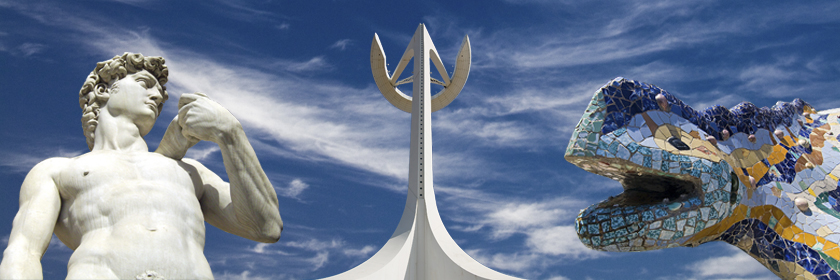

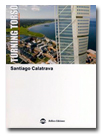

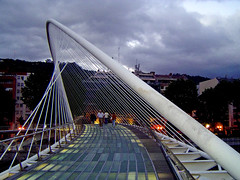




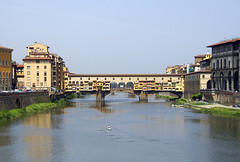




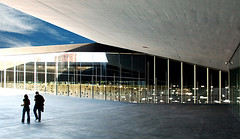



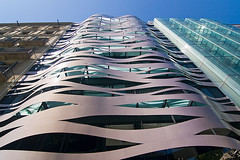




Hola que tal, un post espectacular, me ha gustado mucho. Enhorabuena por el blog en general, me encanta!!
ResponderEliminarYo también he creado hace poco un blog, se llama “Vivienda única” donde tratamos temas como viviendas sostenibles, últimas tendencias en diseño, arquitectura, calidad de vida en relación a nuestro hogar, confortabilidad. Me encantaría que lo visitarais y me dieras vuestra opinión por favor!!
Un saludo
http://viviendaunica.com/
Muchísimas gracias por tu comentario Roberto, eres el mejor!!!
ResponderEliminarUn saludo,